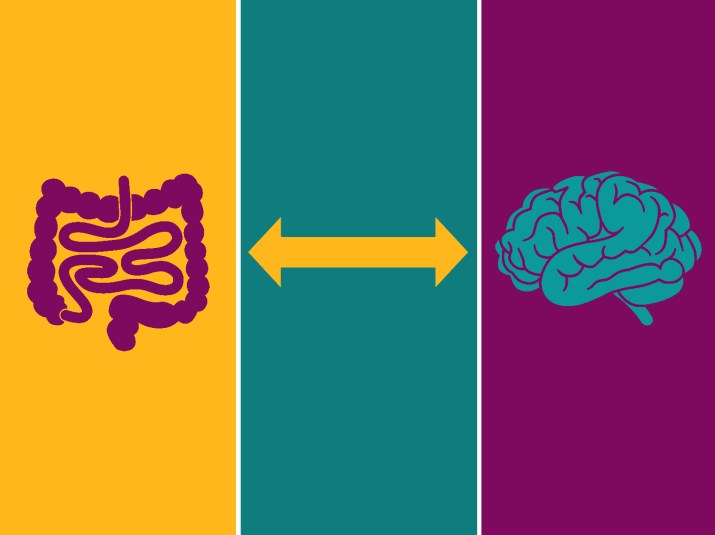Improving Your Gut-Brain Connection Can Put an End to Fatigue and Anxiety

Angie Spuzak, 43, suffered extreme fatigue and anxiety. When doctors chalked it all up to “getting older,” she took her health into her own hands and discovered the surprising cause — and easy cure. Here’s her story, as told to Julie Revelant:
“There’s no way I’ll be able to go. Can you tell them I have a cold, or say that I have to work?” I pleaded with my partner, Cary. Cary’s family had invited us over for dinner, but I was so exhausted that there was no way I could go. The problem was, this wasn’t the first time I had backed out of a commitment with them. Cary was always understanding, and his family was so nice about it — they would always call to see how I was feeling — but I worried that they were offended. And I knew it was important for Cary to see his family, so I always urged him to go without me, even though he felt bad about leaving me alone at home. Every time after I kissed him goodbye and collapsed on the couch, all I could think was: What has happened to me?
Always Missing Out: The Fatigue-Anxiety-Depression Cycle
I had considered myself a type-A personality, bursting with energy and up for any adventure… until the fatigue set in about three years ago. Suddenly, everything in my life felt overwhelming, and it really set me back. When my friends would invite me out, I’d always decline. They said they understood and asked if they could do anything to help, but it was so disappointing that I couldn’t live my life the way I always had. Without anything fun to look forward to, I became depressed.
The fatigue also impacted my business as a personal chef. Because I didn’t have enough energy to plan, shop, and cook for my clients, I was forced to cancel so many jobs. It was emotionally and financially devastating. Add in the chronic bloat, brain fog, irritability, and anxiety, and I felt like I was falling apart. Plus, I gained 15 pounds. I went to doctor after doctor, but each one told me I was just getting older. It was so frustrating to feel like no one was really listening to me.
Because the doctors weren’t much help, I decided to do some detective work on my own. While attending school to become a nutritionist, I learned about the gut-brain axis — a communication pathway that connects the gut to the brain. I read that when the gut is overrun with bad bacteria or fungi, such as yeast, the gut and brain basically can’t communicate effectively and levels of neurotransmitters such as serotonin get out of balance. And when that happens, it can trigger a variety of symptoms, including all the ones I was battling.
One easy way to improve gut health? Trying the simple soup recipe in the video below! It’s packed with prebiotics, which keep your good gut bacteria happy:
How I Healed My Gut-Brain Connection
I took a stool test and learned I had candida yeast overgrowth, which is a main cause of the gut dysfunction that prevents the gut and brain from communicating. I also took an organic acids test, which includes markers for neurotransmitters, and it showed I was deficient in serotonin, dopamine, and norepinephrine, which is another red flag that there’s a problem with the gut-brain axis.
As I looked further into the issue, I learned that diet and stress were the likely root causes. When I lived in Poland, I ate only whole foods, but when I came to the United States and began eating more processed foods, I started to get symptoms. To help get rid of the yeast and help my gut heal, I went on an elimination diet: I cut out sugar and processed foods, ate more fiber-rich foods including cruciferous vegetables, and drank water with lemon. I took probiotics to put the healthy bacteria back in my gut, and other supplements — including vitamins C and B6, L-tryptophan, and 5-HTP — to help increase my neurotransmitters. And to minimize my stress so my body could fully heal, I started yoga and practiced ‘grounding,’ which involves having your skin touch the earth.
Loving Life Again!
After two weeks, my energy improved and my symptoms started to subside. Within eight months, my energy was completely restored. I couldn’t believe that such simple fixes could make all the difference Now that fatigue isn’t holding me back, I’m doing the things I love, such as spending time with my friends, growing my business, ThrivingHormones.com, and traveling. Cary and I recently went to the mountains and hot springs, and I had plenty of energy to hike all day. And now, instead of staying home when his family invites us to dinner, I’m able to be present and enjoy their company. I’m living my life to the fullest!
Can you relate to Angie’s experience? Read on to learn more about the gut-brain axis and simple steps you can take to improve communication between your gut and your brain.
Gut-Brain Axis Dysfunction: Surprisingly Common in Women
Breaking science has revealed that both mental and physical health are dependent on the gut-brain axis — a pathway that enables the brain and the “second brain” (a network of neurons in the gut) to communicate. The two “brains” send neurotransmitters and hormones back and forth along the gut-brain axis, but when this pathway is hindered, metabolism, immunity, and mood all suffer.
“Dysfunction of the gut-brain axis is common, affecting about 60 percent of women I see. But most doctors miss it,” says Sara Gottfried, MD, author of Younger: A Breakthrough Program to Reset Your Genes, Reverse Aging, and Turn Back the Clock 10 Years ($15.39, Amazon). The cause of dysfunction: Stress and sugary carbs allow bad bacteria and yeast to thrive in the gut, which creates inflammation that disrupts signaling along the gut-brain axis.
There’s no gold-standard test to assess the function of the gut-brain axis, but that if you have persistent bloat, fatigue, food sensitivities, or yeast overgrowth, you likely suffer from some level of gut-brain axis dysfunction, says Emeran Mayer, MD, author of The Mind-Gut Connection ($19.03, Amazon).
Quick Quiz: How’s Your Gut-Brain Connection?
If you’re fatigued and have two or more of the symptoms below, faulty communication between your gut and brain could be to blame. The symptoms:
- Weight gain
- Bloat
- Brain fog
- Trouble concentrating
- Impaired memory
- Anxiety
- Gastrointestinal discomfort
- Food intolerance or sensitivity
4 Ways to Improve Your Gut-Brain Axis
Breathe out stress. A University of South Carolina study shows daily deep breathing cuts the stress and inflammation that disrupt the gut-brain axis in half. To do: Breathe in slowly through your nose, letting your belly expand, then exhale through your mouth. Repeat 10 times whenever stress strikes.
Season with garlic. Just one clove (2 teaspoons chopped or 1 teaspoon minced) daily kills yeast and delivers probiotics to help heal the gut. The key: Each clove must be crushed and left to sit for 10 minutes before being heated, mixed with an acid, (such as lemon juice) or eaten.
Fill up on gut-friendly foods. Eating more fruit, vegetables, wild-caught seafood, grass-fed meat, and fermented foods (such as yogurt) can help further heal the gut and cut inflammation.
Try intermittent fasting. Just one day of intermittent fasting a week can help “reboot” the gut-brain axis and restore energy, Dr. Gottfried says. Indeed, research in the journal Nature Communications found that mini fasts (during which all the day’s calories are consumed in an 8- to 10-hour period) reduce the growth of harmful microorganisms to promote a healthy gut environment — the key to a well-functioning gut-brain axis. And as a welcome “side effect,” intermittent fasting has been shown to stimulate metabolism and increase energy by 180 percent. Here’s how to get the benefits, according to Gottfried: Once or twice a week, finish your last meal by 7 p.m. and don’t eat again until 9 a.m. the next day. (Drinking water, tea, or coffee is fine during fasting periods.)
This story originally appeared in the February 5, 2018 issue of First for Women magazine.
More from FIRST
Lose 11 Pounds in a Week on This Prebiotic Soup Diet That’s Good for Gut Bacteria
How Eating More Carbs Can Actually Help You Lose More Weight













